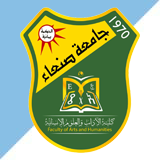Bachelor’s Degree in Archaeology and Tourism
Faculty of Arts and Humanities, Sana'a University
History of the Department:
The Department of Archaeology and Tourism at Sana’a University boasts a rich history. In the academic year 1982-1983, archaeological studies gained independence from the History Department, establishing itself as a specialized department within the Faculty of Arts. This milestone marked the beginning of dedicated instruction in archaeology and its various specializations. Dr. Abdul Halim Nour El-Din, from the Arab Republic of Egypt, was appointed as the department’s first chairperson, with the enthusiastic support of the then-dean, Dr. Yousef Mohamed Abdullah. The department’s foundation was further solidified by the invaluable contributions of a group of specialized professors: Dr. Shihata Adam, Dr. Mohammed Saif Al-Nasr, Dr. Abdel Qader Abdel Rahman, and assistants Abdo Othman Ghalib and Mohammed Alnoud (Abdullah 1984:32). Notably, the department witnessed its first graduating class in 1985, with six graduates (Nour El-Din 1989:2).
Today, the department comprises three divisions:
- Ancient Archaeology Division
- Islamic Archaeology Division
- Tourism Division
The department recognizes the importance of a well-rounded education, and its curriculum seamlessly blends theoretical knowledge with practical application. To ensure academic excellence, the department provides access to a range of specialized facilities as follows:
- Restoration Laboratory:
Established in 1983 through a collaborative effort between the university administration and the Arab Organization for Education, Culture, and Science, this laboratory provides students with invaluable training in the restoration and preservation of both organic and inorganic artifacts. It is well-equipped with the necessary tools and chemical materials (Abdullah 1984:114).
- Photographic Laboratory:
Founded in the same year, this laboratory boasts an impressive array of photographic equipment, including Pentax and Yashica cameras, black and white photo development tools, slide projectors, and audiovisual equipment encompassing televisions and video players. The laboratory also features video and cinematography cameras to document the department’s scientific and cultural activities, as well as to train students in photography skills and the documentation of archaeological sites during fieldwork.
- Drawing Studio:
This dedicated space allows students to develop their skills in creating plans, engineering works, and architectural drawings, all of which are crucial aspects of both fieldwork and academic coursework.
- Library:
The department maintains a well-stocked library brimming with specialized books, reference materials, and journals pertaining to archaeology and the ancient history of Yemen.
- Educational Museum:
In 1983, the department collaborated with the University administration to establish an educational museum displaying a captivating collection of ancient Yemeni artifacts. The museum comprises three exhibition halls and a corridor equipped with glass filters for display purposes. This space comprises three sub-halls and a corridor:
- Hall (1):
This temperature and humidity-controlled space displays and safeguards a collection of mummies and other ancient artifacts with the aid of specialized preservatives and chemical treatments.
- Hall (2):
It is dedicated to displaying models of Islamic artifacts from various historical periods.
- Hall (3):
This hall is designed to exhibit a diverse collection of ancient artifacts and inscriptions.
- Corridor:
The corridor is furnished with pyramid-shaped vitrines, displaying lightweight artifacts. On the opposite inner side, closed windows are utilized to exhibit additional artifacts. Moreover, the upper part of the corridor is adorned with enlarged photographic images depicting models of ancient and Islamic architectural artifacts. The artifacts are documented using scientific methods, incorporating both textual and visual records. Each item is assigned a number corresponding to its entry date into the museum, and a dedicated card is created for every individual piece.
Mission
Our mission is to equip students with the theoretical and practical knowledge necessary to contribute to the advancement of archaeological and tourism endeavors and exercise their creative abilities in documenting cultural heritage, preserving tourist sites, and fostering the development of the tourism industry while leveraging cultural products to create employment opportunities in accordance with the highest standards.
Vision
To become a leading center for archaeological and tourism studies, driving impactful excavation projects, and cultivating skilled and competent professionals for the archaeological, tourism, and museum sectors.
Department Aims:
- Equipping students with a comprehensive understanding of the fundamental principles and concepts within the fields of archaeology and tourism.
- Fostering a strong sense of national awareness among students, inspiring them to actively safeguard cultural artifacts and heritage sites, with a view to serving their country and society, and encouraging them to pursue higher education and thrive in both local and international labor markets
- Enabling students to develop a comprehensive understanding of both the history of human and Yemeni civilizations, as well as the scientific curricula relevant to their studies, which will ensure their mastery of the required knowledge and skills to conduct research in archaeology and tourism.
- Developing students’ skills to actively engage in scholarly discourse through active participation in scientific seminars, conferences, and specialized workshops.
Program Study Plan:
المستوى الأول - الفصل الاول (لآثار والسياحة) / (Archeology & Tourism) Level 1 – Semester 1
المستوى الأول - الفصل الثاني(الآثار والسياحة) / (Archeology & Tourism) Level 1 – Semester 2
المستوى الثاني- الفصل الاول (الآثار والسياحة) / (Archeology & Tourism) Level 2 – Semester 1
لمستوى الثاني- الفصل الثاني(الآثار والسياحة) / (Archeology & Tourism) Level 2 – Semester 2
المستوى الثالث - الفصل الأول (شعبة الآثار القديم) / (Ancient Archaeology Division) Level 3 – Semester 1
المستوى الثالث - الفصل الثاني(شعبة الآثار القديم) / (Ancient Archaeology Division) Level 3 – Semester 2
المستوى الرابع- الفصل الأول (شعبة الآثار القديم) / (Ancient Archaeology Division) Level 4 – Semester 1
